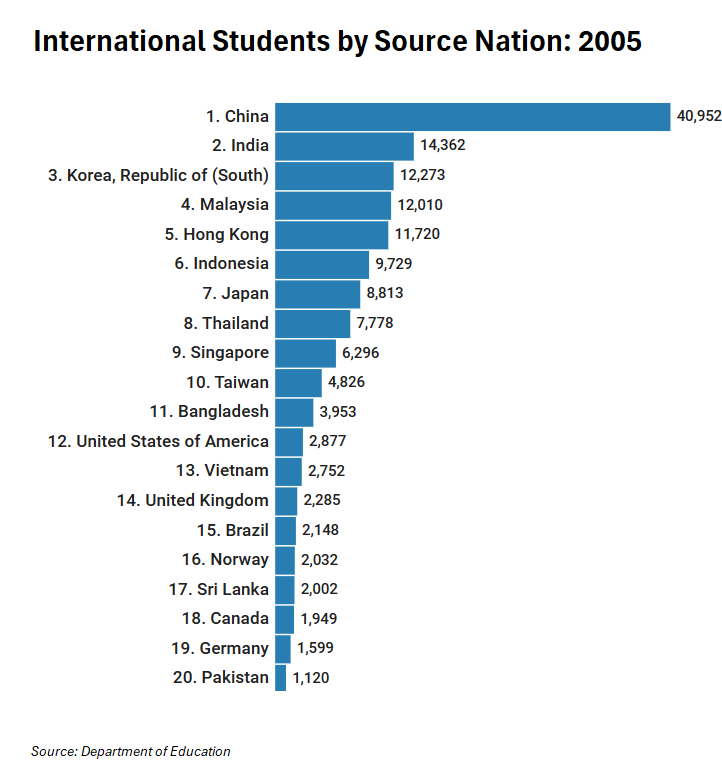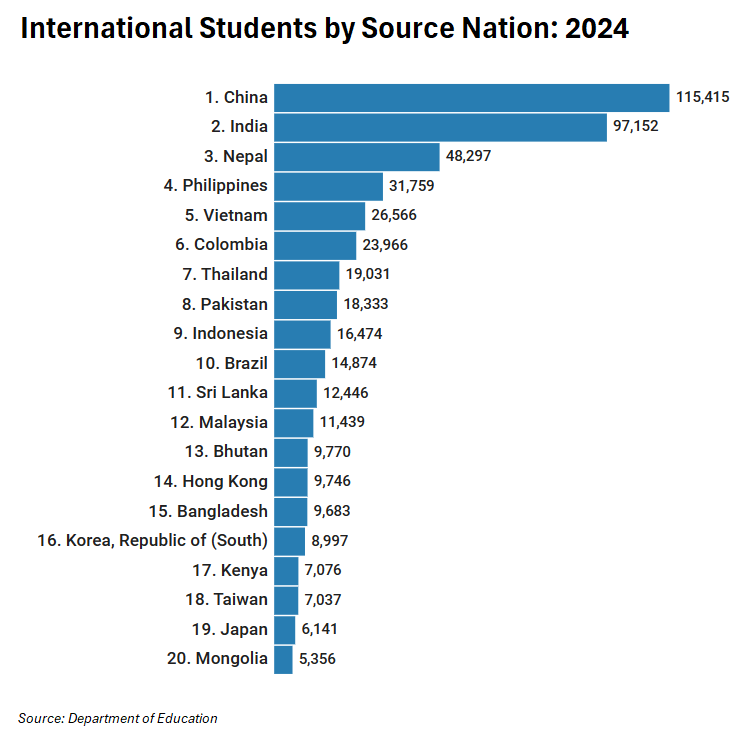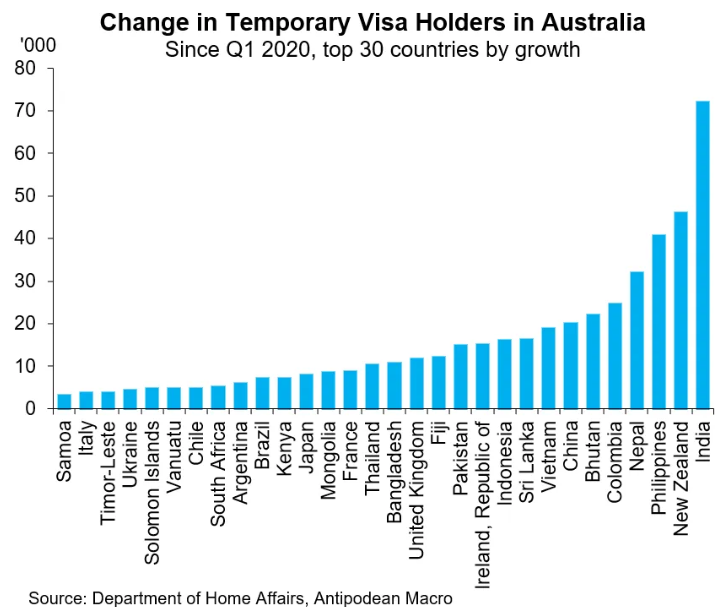Last year, the Albanese government signed two migration deals with India aimed at making it easier for Indians to study, work, and live in Australia.
Among other things, these agreements will provide:
- Five-year student visas for Indians.
- Indian graduates of Australian tertiary institutions on a student visa can apply to work without visa sponsorship for up to eight years.
- Australia will recognise Indian vocational and university graduates to be “holding the comparable AQF qualification” for the purposes of admission to higher education and general employment.
In a speech to India’s Jindal Global University in November 2023, Coalition leader Peter Dutton wholeheartedly supported the two migration pacts signed with India:
“I think there is an opportunity … for us to continue to scale up [higher education exchange], and there’s a lot of domestic interest in making sure that’s the case.” pic.twitter.com/Ns39bHq348
— Will (@SouthWillsy) November 5, 2023
“The number of Australians with Indian ancestry numbers more than 780,000, some 164,000 more since the 2016 Census- something of which I am incredibly proud”, Peter Dutton said in his speech.
“Indeed, there is a strong bipartisan support between the two major political parties in Australia when it comes to nurturing migration with India”.
“When Prime Ministers Modi and Albanese met in Sydney in May, they finalised a Migration and Mobility Partnership Agreement”.
“That arrangement will facilitate a greater two-way flow of students, of graduates, of academics and business people”
“It’s an initiative I welcome wholeheartedly”, Dutton said.
The latest migration data shows that Indians are pouring into Australia, driving the nation’s record net overseas migration.
Consider first international student enrolments.
In January 2005, there were a total of 173,787 international students enrolled in Australia. China (40,952) dominated enrolments, with India (14,362) in a distant second place:

Fast forward nearly a decade to January 2024 and there were 567,505 international students enrolled in Australia.
While China still comprises the most international students (115,415), India (97,152) has easily recorded the strongest growth in numbers over the decade:

Next, data released last month by the Australian Bureau of Statistics (ABS) shows that Indian-born residents recorded easily the strongest growth in population (an increase of 467,000) in the decade to 2023:

Finally, the next chart from Justin Fabo at Antipodean Macro shows that the number of temporary visa holders in Australia, excluding visitors, has risen by around 480,000 since March quarter 2020, led by Indians:

In March, India’s unemployment rate was 7.6%, about double that of Australia. Worse, more than 20% of young Indians are unemployed.
As a result, there is a large underclass of younger, poorer Indians who are eager to move to Australia to live and work.
Labor’s migration pacts with India, endorsed by the Coalition, will ensure that Australia’s net overseas migration will remain persistently high, resulting in perpetual housing and infrastructure shortages, sluggish productivity growth, stagnant real wages, a deteriorated natural environment, and overall declining living standards.

